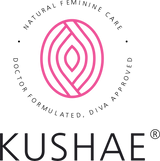This article is for informational purposes only. It is not, nor is it intended to be, a substitute for professional medical advice, diagnosis, or treatment and should never be relied upon for specific medical advice.
Stretch Marks: What are Stretch Marks, Stretch Mark Removal, and Prevention
Everything you need to know about stretch marks:
What are stretch marks?
Stretch marks are a type of scar that develops when our skin shrinks or stretches rapidly and can occur during periods of rapid growth or weight gain, for example, during puberty and pregnancy. The sudden change causes the collagen and elastin fibers that support the skin to break down. Stretch marks may look different as they age. They start off as pink, purple, or red, to a white or silvery shade over time. If you have stretch marks, you are not alone. Stretch marks are not harmful and can occur to anyone, regardless of body type, gender, or race. They can cause us to feel self-conscious, and while they are unlikely to go away on their own, many measures can be taken to reduce their appearance.
Causes of stretch marks
Stretch marks occur naturally for many reasons, but the common factor is that an abrupt change happens, resulting in internal skin tearing from overstretching that ends in scarring. Common reasons for stretch marks include:
- Puberty: During puberty, adolescents go through rapid changes and growth spurts in a short amount of time that can cause the skin to stretch and lead to the formation of stretch marks.
- Pregnancy: Stretch marks are common in pregnant people due to hormonal changes and rapid weight gain. As the fetus grows inside the womb, it may cause the skin on the abdomen to stretch, which causes the development of stretch marks.
- Weight gain or loss: Rapid weight gain or less can result in the skin stretching or shrinking quickly, resulting in stretch marks.
- Medical condition: Conditions such as Cushing's syndrome and Marfan syndrome can cause the formation of stretch marks.
- Corticosteroids: Prolonged use of corticosteroid drugs can weaken the skin and increase the risk of developing stretch marks.
- Genetics: Some people are more prone to stretch marks due to genetic factors, regardless of the above factors mentioned. They may just develop stretch marks because of their genetic makeup.
Common places stretch marks are found
Stretch marks can appear on various body parts where the skin has been stretched rapidly or beyond its limits. While they can appear anywhere on the body, these are the most common places stretch marks are found:
- Abdomen
- Breasts
- Buttocks
- Hips
- Thighs
- Upper arms
Confused about which Kushae product to try first? Take the Kushae quiz to find a personalized product selection.
Prevention of stretch marks
It is not always possible to prevent stretch marks from appearing on the skin; you can take some steps to minimize your risk of developing them, such as:
- Kushae Premiere Silk Body Oil: The only moisturizing, non-staining skin oil that improves skin elasticity, reduces inflammation, AND boosts mood! Our fast-absorbing dry oil blend provides hydrating moisture to every part of your body and minimizes stretch mark visibility. Try our body silk oil to help prevent stretch marks.
- Maintain a healthy weight: Eat a balanced diet and exercise regularly.
- Stay hydrated: Drink plenty of water to keep your skin hydrated and supple.
- Moisturize daily: Applying moisturizer with vitamin E, cocoa, or shea butter to your skin to hydrate it and reduce the risk of stretch marks
- Gradually increase exercise intensity: Don’t push yourself too hard too quickly.
- Avoid rapid weight gain or loss: A healthy weight loss is about 1 to 2 lbs weekly.
- Use sunscreen: To protect your skin from the sun.
While these tips may reduce your risk of developing stretch marks, remember that they may not be completely preventable. It's essential to embrace and love your body, including any stretch marks that may appear as a natural part of life.
Treatment/removal of stretch marks
Various treatments are available to get rid of stretch marks and improve their appearance. Some of these treatments include:
- Microdermabrasion: This minimally invasive treatment involves gentle skin exfoliation with tiny crystals to reveal the skin under the more elastic stretch marks. By stimulating the growth of new skin cells, microdermabrasion can help reduce the appearance of older stretch marks.
- Topical creams: Over-the-counter creams and lotions containing retinoids, hyaluronic acid, or vitamin E can help reduce the appearance of stretch marks by promoting collagen production and improving skin elasticity.
- Microneedling: This procedure involves using a device with tiny needles to puncture the skin to stimulate collagen production and improve the appearance of stretch marks.
- Laser therapy: This non-invasive treatment involves using a focused light to remove the outer layer of skin, stimulating the growth of new, healthy skin cells.
- Pulsed dye laser therapy can help stimulate collagen production and the growth of elastin fibers in the skin, leading to improved appearance of stretch marks. This therapy is most effective on newer stretch marks.
- Excimer laser therapy stimulates melanin (skin color) production so the stretch marks match the surrounding skin.
- Fractional photothermolysis is similar to pulsed dye laser therapy and has less potential for skin damage. This treatment uses a laser to target small areas of your skin where there are stretch marks.
While these treatments can help reduce the appearance of stretch marks, they may go away completely and can be costly. The effectiveness of these stretch mark removal treatments varies depending on the stretch marks' severity and other factors, such as age and skin type. The procedures have some side effects, including skin irritation, redness, or swelling. It's best to consult with a dermatologist or healthcare provider to determine the best and safest treatment options for your needs.


















